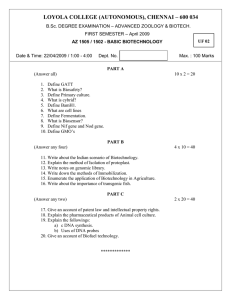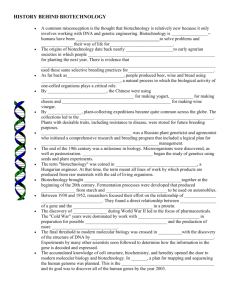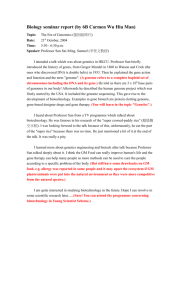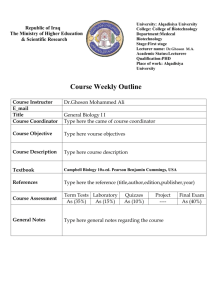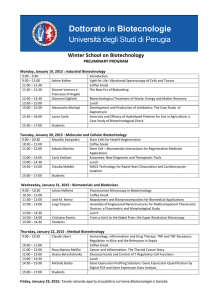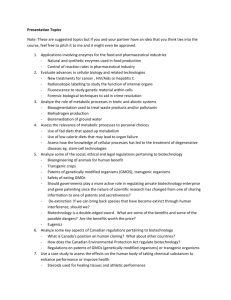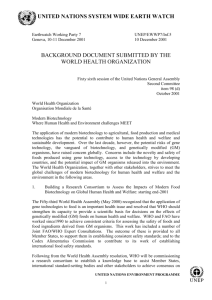history behind biotechnology
advertisement
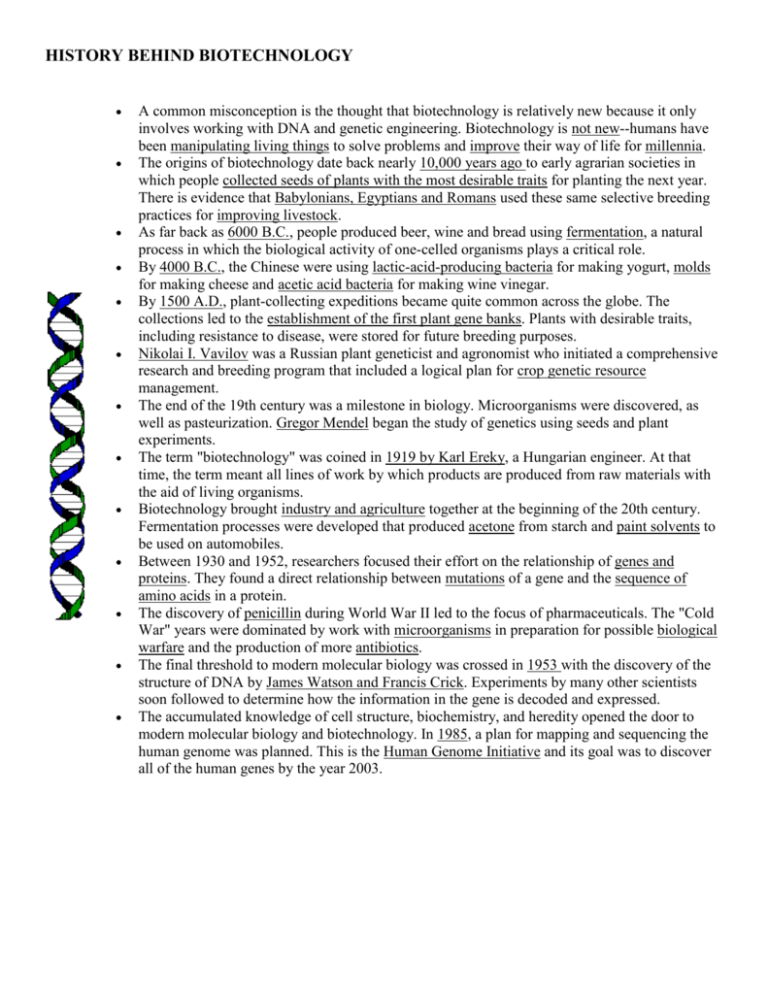
HISTORY BEHIND BIOTECHNOLOGY A common misconception is the thought that biotechnology is relatively new because it only involves working with DNA and genetic engineering. Biotechnology is not new--humans have been manipulating living things to solve problems and improve their way of life for millennia. The origins of biotechnology date back nearly 10,000 years ago to early agrarian societies in which people collected seeds of plants with the most desirable traits for planting the next year. There is evidence that Babylonians, Egyptians and Romans used these same selective breeding practices for improving livestock. As far back as 6000 B.C., people produced beer, wine and bread using fermentation, a natural process in which the biological activity of one-celled organisms plays a critical role. By 4000 B.C., the Chinese were using lactic-acid-producing bacteria for making yogurt, molds for making cheese and acetic acid bacteria for making wine vinegar. By 1500 A.D., plant-collecting expeditions became quite common across the globe. The collections led to the establishment of the first plant gene banks. Plants with desirable traits, including resistance to disease, were stored for future breeding purposes. Nikolai I. Vavilov was a Russian plant geneticist and agronomist who initiated a comprehensive research and breeding program that included a logical plan for crop genetic resource management. The end of the 19th century was a milestone in biology. Microorganisms were discovered, as well as pasteurization. Gregor Mendel began the study of genetics using seeds and plant experiments. The term "biotechnology" was coined in 1919 by Karl Ereky, a Hungarian engineer. At that time, the term meant all lines of work by which products are produced from raw materials with the aid of living organisms. Biotechnology brought industry and agriculture together at the beginning of the 20th century. Fermentation processes were developed that produced acetone from starch and paint solvents to be used on automobiles. Between 1930 and 1952, researchers focused their effort on the relationship of genes and proteins. They found a direct relationship between mutations of a gene and the sequence of amino acids in a protein. The discovery of penicillin during World War II led to the focus of pharmaceuticals. The "Cold War" years were dominated by work with microorganisms in preparation for possible biological warfare and the production of more antibiotics. The final threshold to modern molecular biology was crossed in 1953 with the discovery of the structure of DNA by James Watson and Francis Crick. Experiments by many other scientists soon followed to determine how the information in the gene is decoded and expressed. The accumulated knowledge of cell structure, biochemistry, and heredity opened the door to modern molecular biology and biotechnology. In 1985, a plan for mapping and sequencing the human genome was planned. This is the Human Genome Initiative and its goal was to discover all of the human genes by the year 2003.
